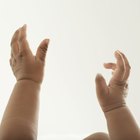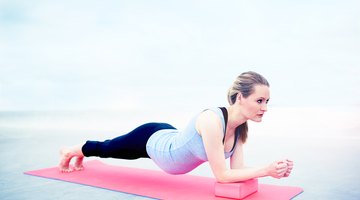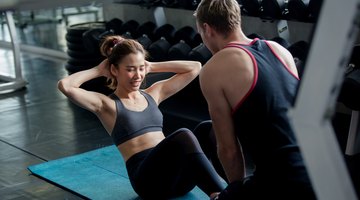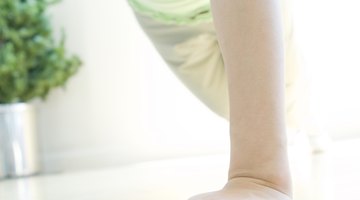Exercises With an Exercise Ball to Help Induce Labor
Exercises on a ball can help your baby turn and move into the birth canal. Once your baby moves into the correct position, your labor is likely to begin. Midwives and doulas have been using exercise balls for decades as a way to help speed up dilation and move the baby down into the pelvis. Once labor begins, similar exercises can help manage pain and assist you in finding a comfortable birthing position.
Bouncing
Before you can give birth to your baby, he must turn and move into the proper position. Finding a comfortable position and gently bouncing up and down on a birthing ball can help encourage your baby's head to move down the birth canal and into the proper position, according to the website AskBaby.
Rocking and Pelvic Tilts

Exercises That Help With Stiffness in Babies' Legs & Arms
Learn More
Rocking also helps your baby move into position. When you sit on the ball, rock your hips and pelvis from front to back, side to side or in a circular motion. Unlike rocking your hips while standing, doing so on a ball helps eliminate some of the stress and pressure on your back and joints, which allows you to rock with wider movements and for longer periods of time.
Sitting
Simply sitting on a birthing ball may not seem like an exercise, but doing so engages your core and back muscles, which builds strength over time. Sitting also helps position your baby in a way that's best in line with gravity, while laying flat on your back forces your baby to work against gravity. The act of sitting on the ball applies gentle downward pressure as your muscles work to maintain your stability.
Rocking on Hands and Knees

Yoga Positions That Increase Contractions
Learn More
Rocking on your hands an knees while leaning over a ball helps loosen your pelvis. It may also encourage faster dilation and effacement, according to the Peninsula Regional Medical Center. While you do not need a ball to rock your hips in this position, having the ball allows you to stay on your hands and knees longer and more comfortably without putting excess stress on your arms, wrists or knees.
Wall Squats
Wall squats open up the pelvis, help the baby move into position and create more room for your baby to move through your pelvis, according to Maternity Accupressure. Best done when the baby has already started to move downward into the pelvis, squats speed up your baby's journey downward and can kick start labor. To perform them, place the ball between a wall and your lower back. Gently roll downward as far as you comfortably can, while bending your knees. Slowly straighten your legs and roll back up to standing.











